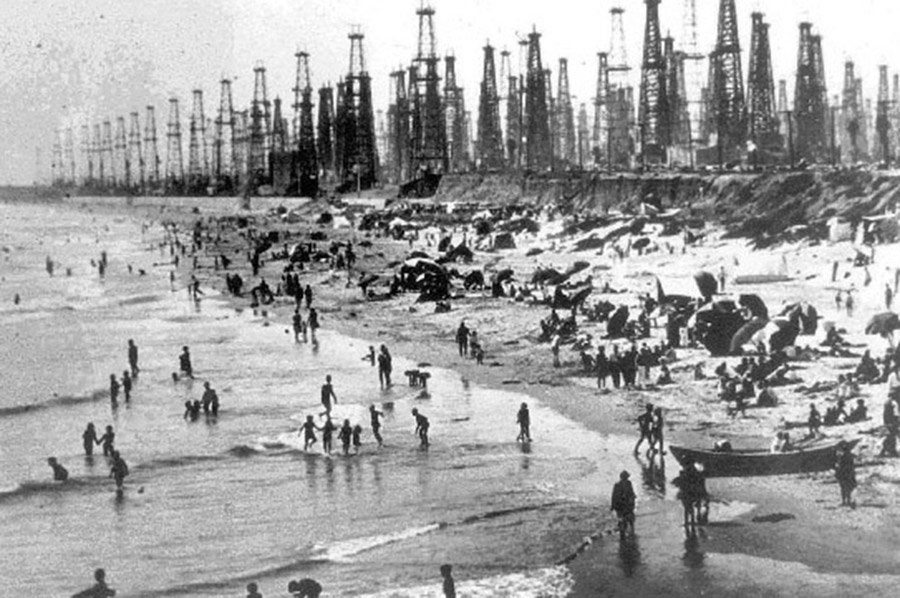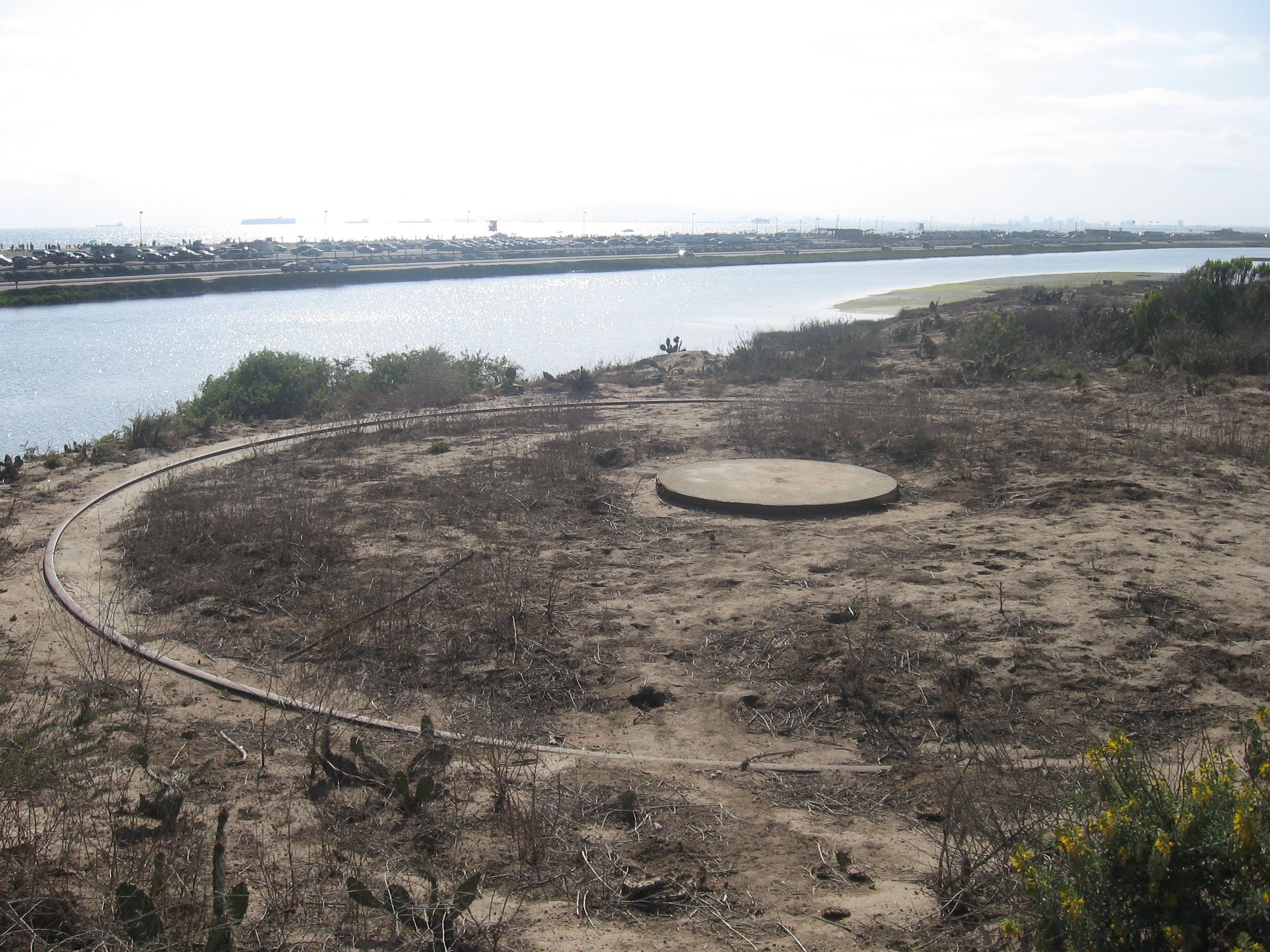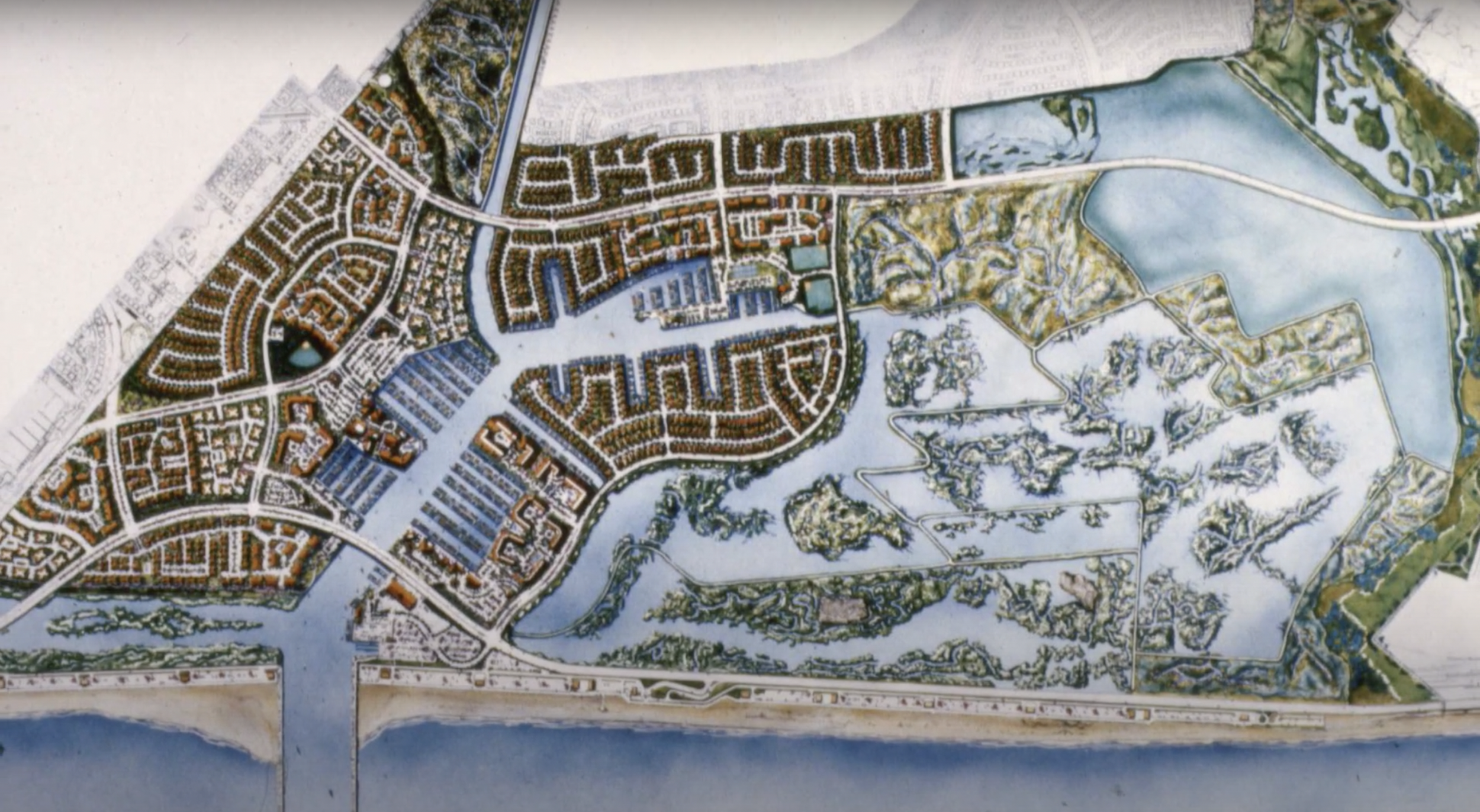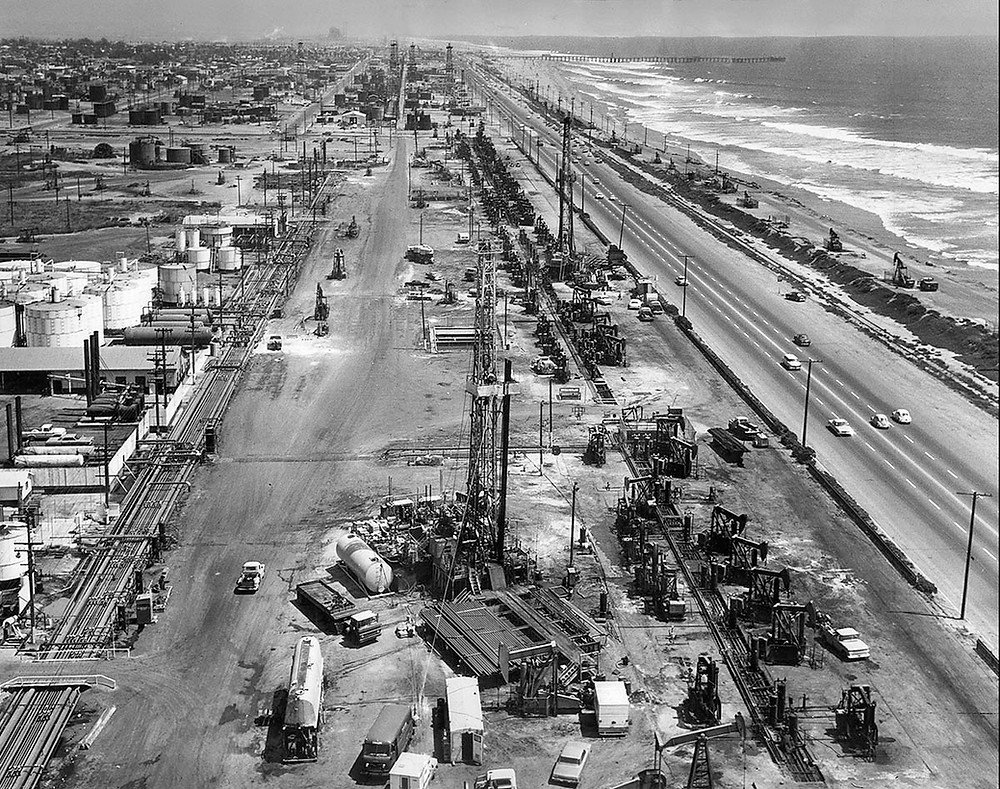
1899
On October 17, 1899, the Bolsa Chica Gun Club opened its doors for the first time. Frequented by the likes of Babe Ruth and Teddy Roosevelt, the Club’s greatest ecological significance was their construction of a dam across Bolsa Bay. Though it promoted calmer waters for hunting, the dam would prevent seawater from entering Bolsa Chica for nearly 110 years.

1920
By the 1920’s, Huntington Beach had struck oil. In 1923 alone, more than 33 million barrels of oil were produced in the city. By 1940, 19 wells were producing oil on Bolsa Chica. Though drilling would prevent Bolsa Chica from being overrun by housing developments, it would nearly destroy the ecology integrity of the wetlands. Even today, oil drilling at Bolsa Chica continues.

1940
When Japan entered World War II in 1941, the U.S. Army chose the Bolsa Chica mesa as its ideal site for a coastal defense battery. The Gun Club was evicted and the site transformed . Underground bunkers, tunnels, trenches, and support structured were erected across the mesa. Panama Mounts can still be seen just north of the mesa.


1976
After five years of raising awareness against Signal’s plan, local chapters of the League of Women Voters and American Association of University Women formed the Amigos de Bolsa Chica with the aim of advocating for the Bolas Chica’s preservation and encouraging its acquisition by the public.


1988
In August of 1988, Signal Landmark countersued the Amigos de Bolsa Chica in Superior Court, which was dismissed a few months later. In November of that year, the Amigos joined the California State Lands Commission, County of Orange, City of Huntington Beach, and Signal to form the Bolsa Chica Planning Coalition with the aim of preparing an alternative plan for the future of Bolsa Chica.

1997
In 1997, the State of California purchased 880 acres of the Bolsa Chica from Signal Landmark for around $25 million, increasing public ownership of the Bolsa Chica lowlands to 1200 acres. That same year, the Bolsa Chica Restoration Steering Committee was formed by 8 federal agencies to oversee what would become the largest coastal wetland restoration ever undertaken in Southern California history.


2016
In 2016, the Amigos celebrated its 40th anniversary. Since 1995, the Wildlife Society, Audubon, State Parks, the City of Huntington Beach, the California Coastal Commission, and NOAA have all recognized and commemorated the efforts of this organization to preserve and restore Bolsa Chica. This same year, a documentary chronicling the organization’s history was published.